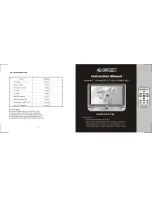
TECHNICAL INFORMATION
71
EMISSION CONTROL SYSTEM INFORMATION
Source of Emissions
The combustion process produces carbon monoxide, oxides of nitrogen, and
hydrocarbons. Control of hydrocarbons and oxides of nitrogen is very important
because, under certain conditions, they react to form photochemical smog
when subjected to sunlight. Carbon monoxide does not react in the same way,
but it is toxic.
Honda utilizes appropriate air/fuel ratios and other emissions control systems to
reduce the emissions of carbon monoxide, oxides of nitrogen, and
hydrocarbons.
Additionally, Honda fuel systems utilize components and control technologies
to reduce evaporative emissions.
The U.S. and California Clean Air Acts, and Environment and Climate
Change Canada (ECCC)
U.S. EPA, California and Canadian regulations require all manufacturers to
furnish written instructions describing the operation and maintenance of
emission control systems.
The following instructions and procedures must be followed in order to keep
the emissions from your Honda engine within the emission standards.
Tampering and Altering
Tampering is a violation of federal and California law.
Tampering with or altering the emission control system may increase emissions
beyond the legal limit. Among those acts that constitute tampering are:
• Removal or alteration of any part of intake, fuel, or exhaust systems.
• Alterations that would cause the engine to operate outside its design
parameters.
Summary of Contents for EU3200i
Page 14: ...GENERATOR SAFETY 12 ...
Page 98: ...96 MEMO ...
















































